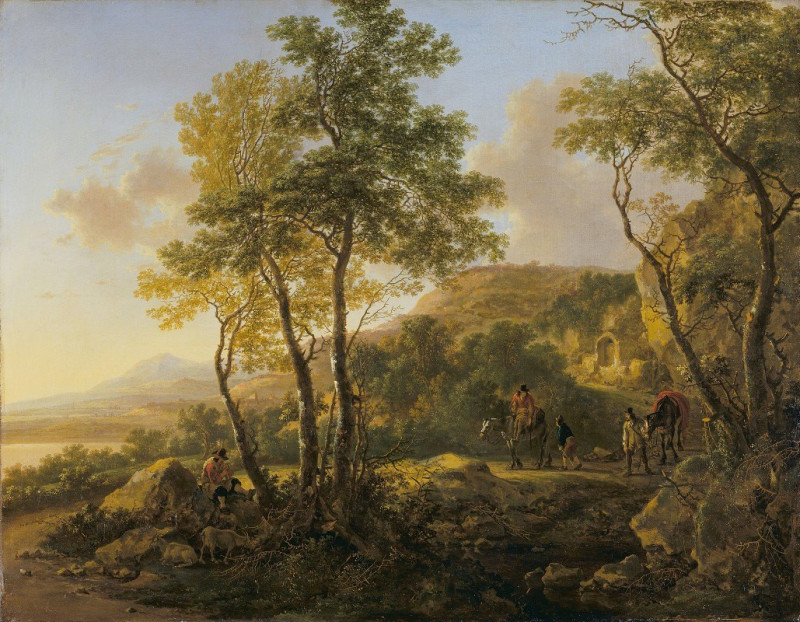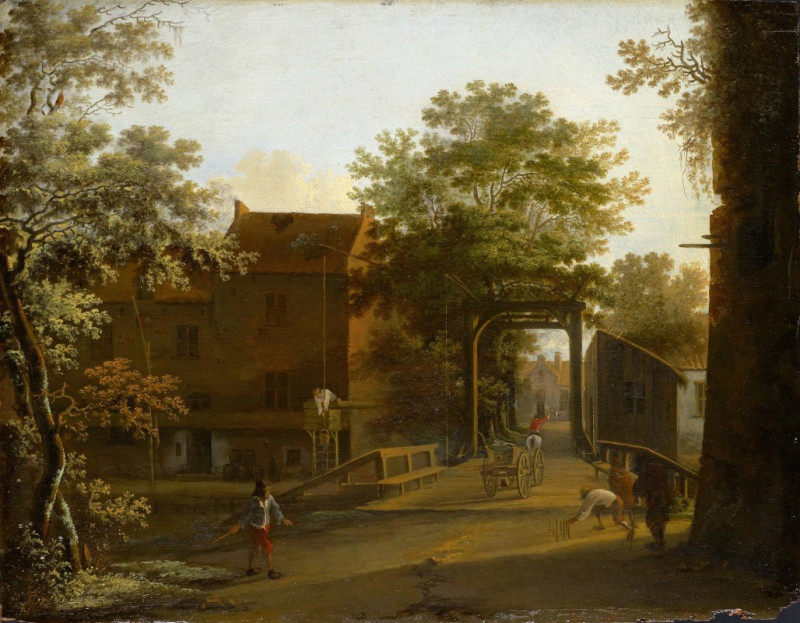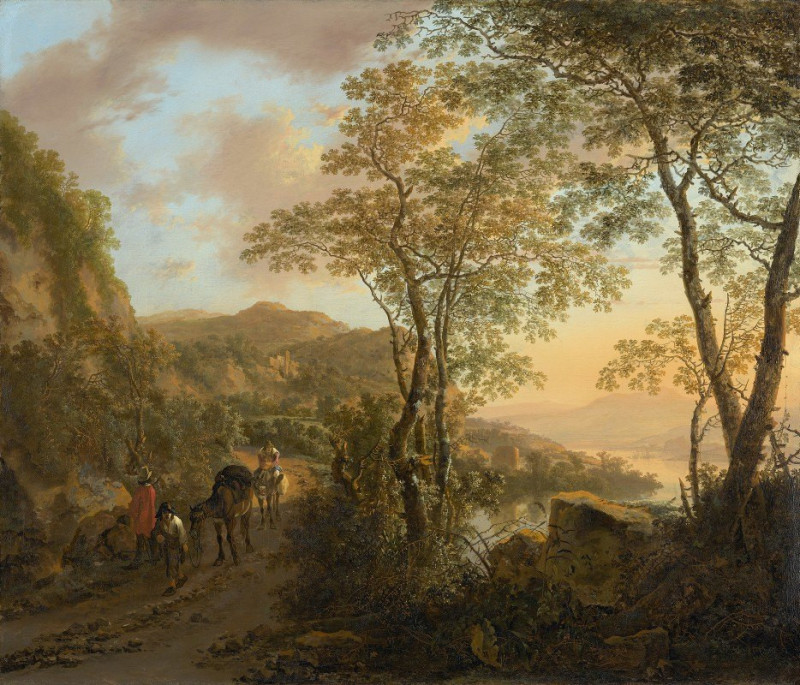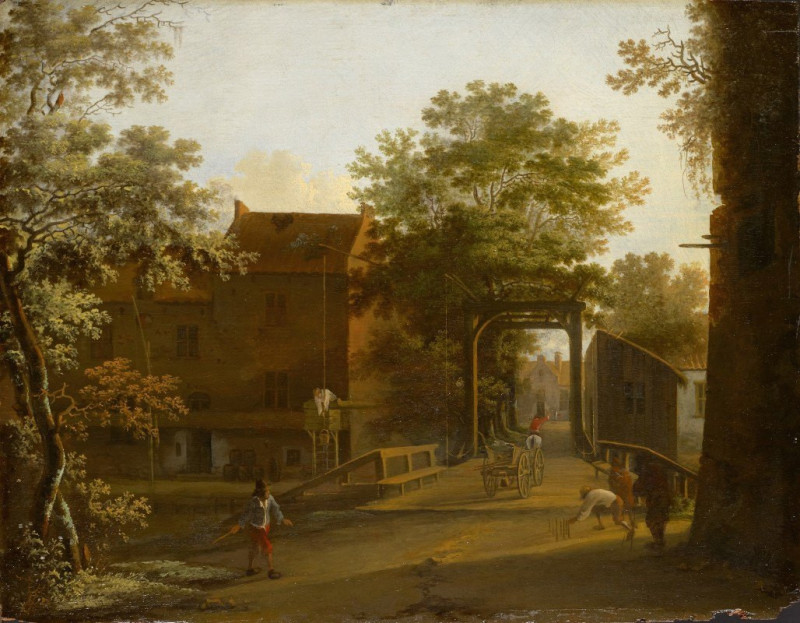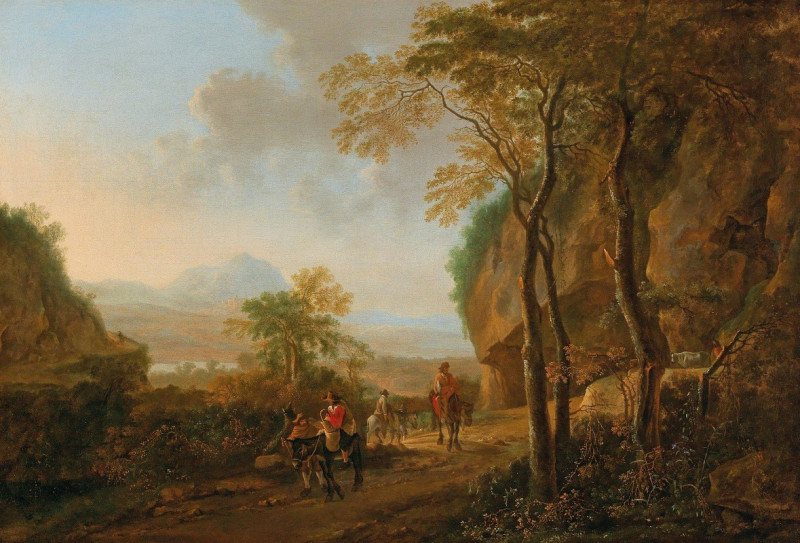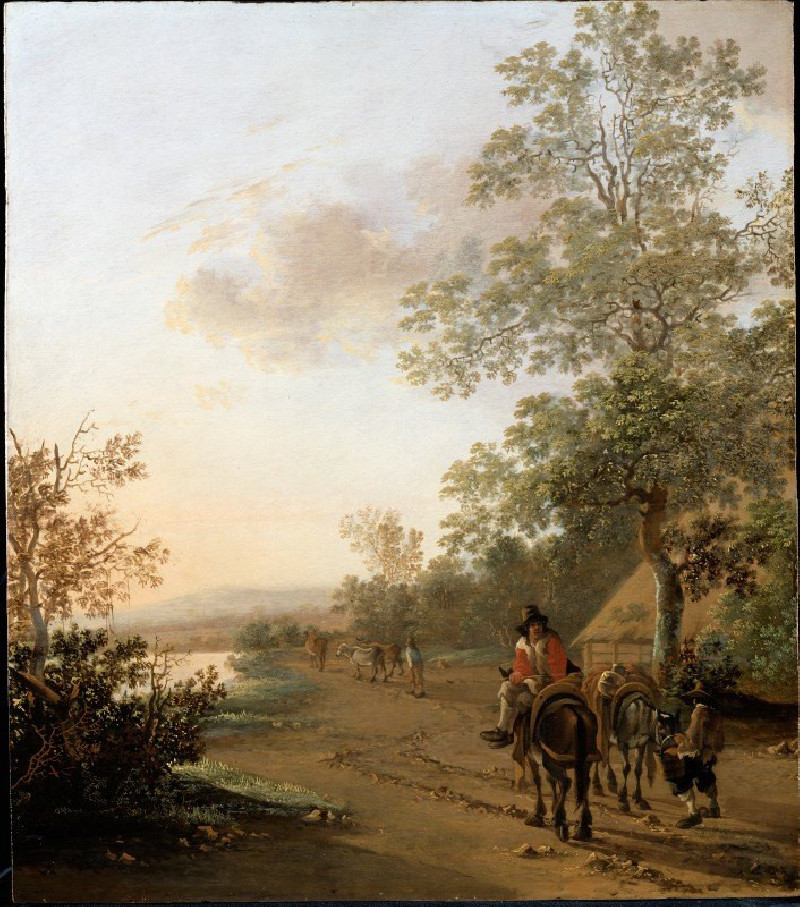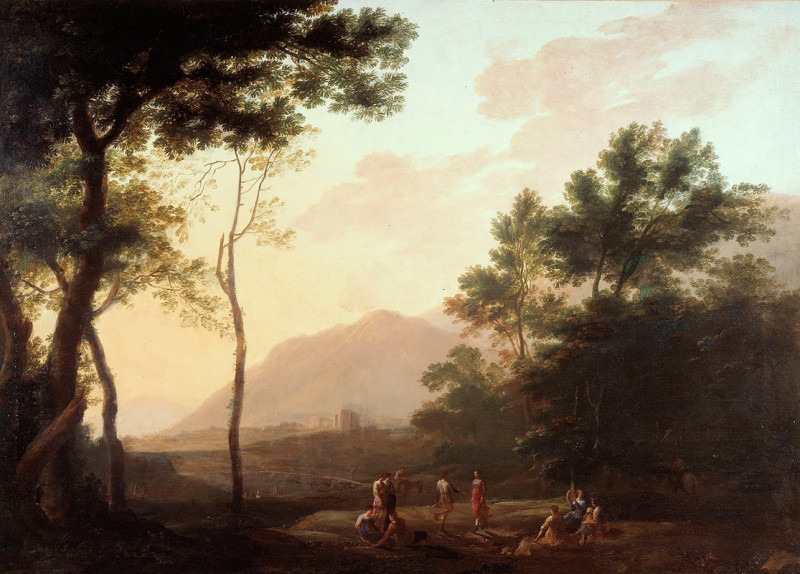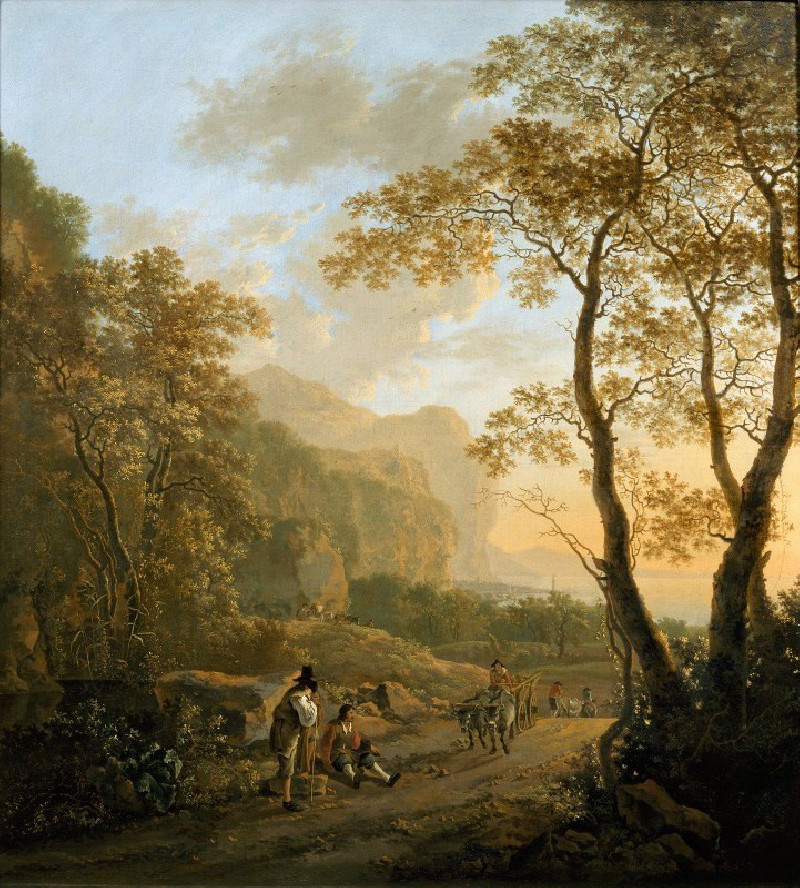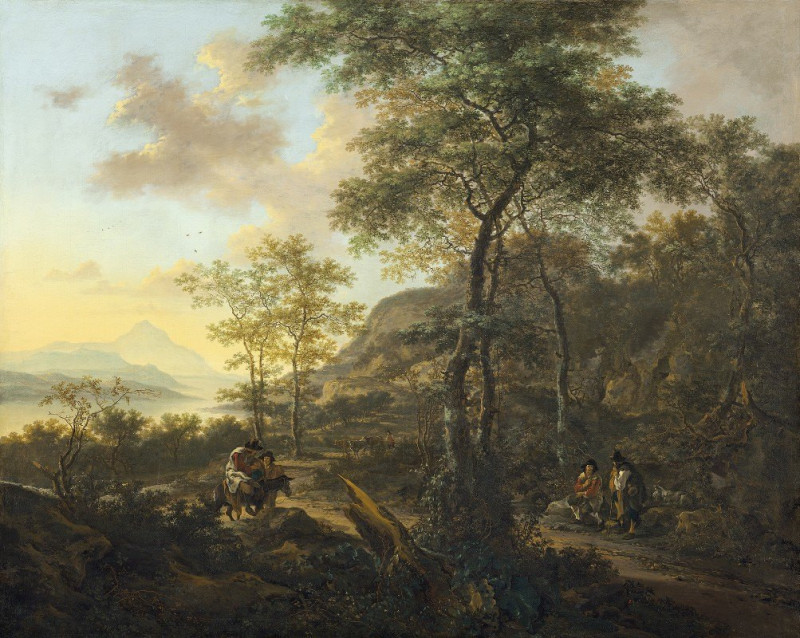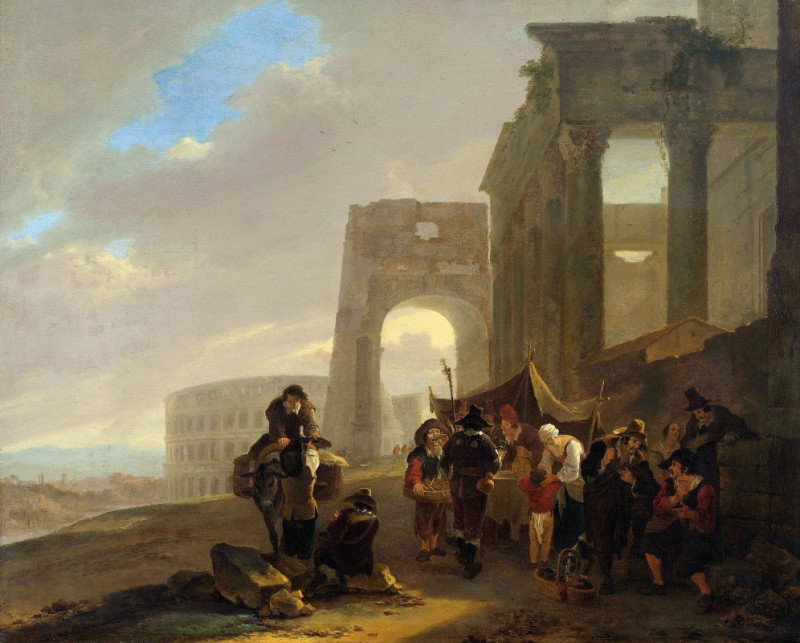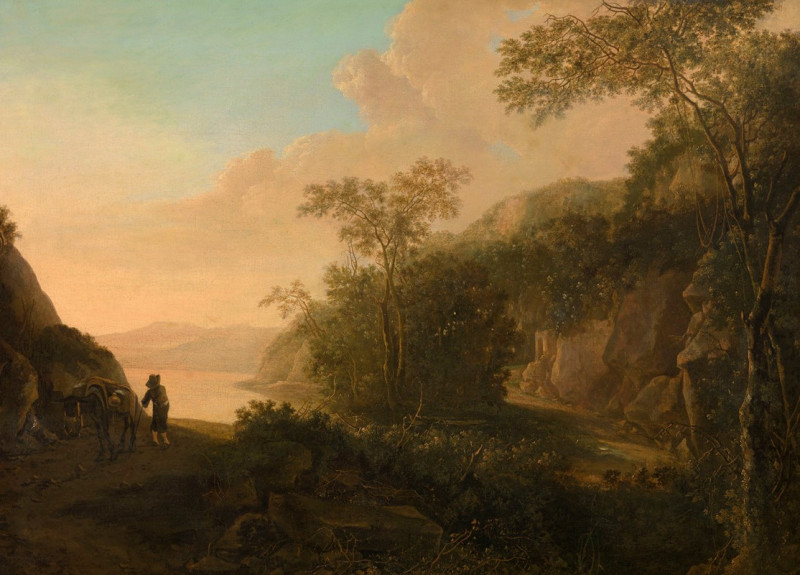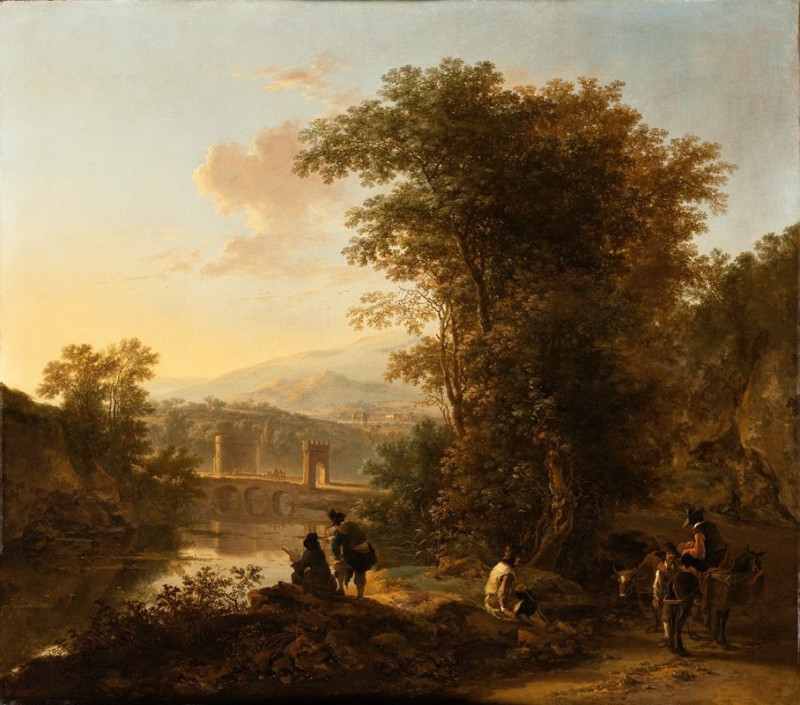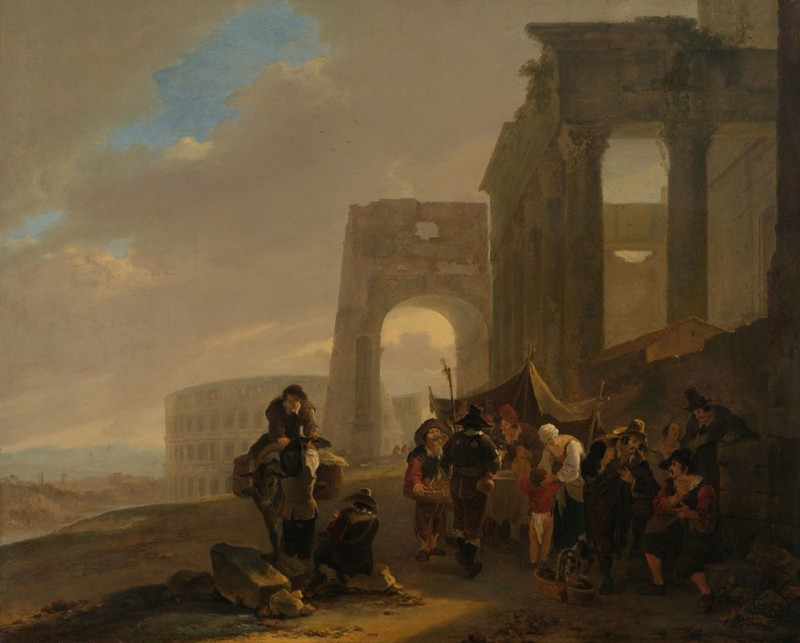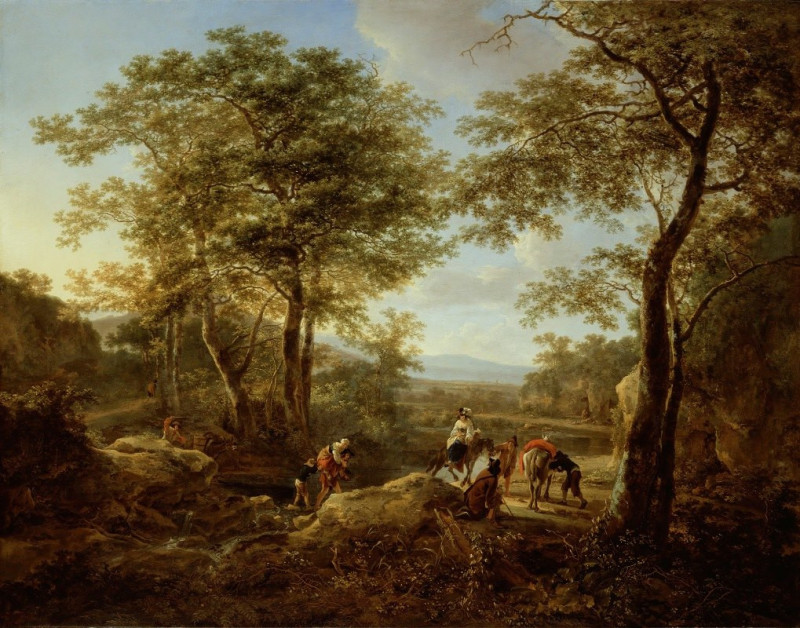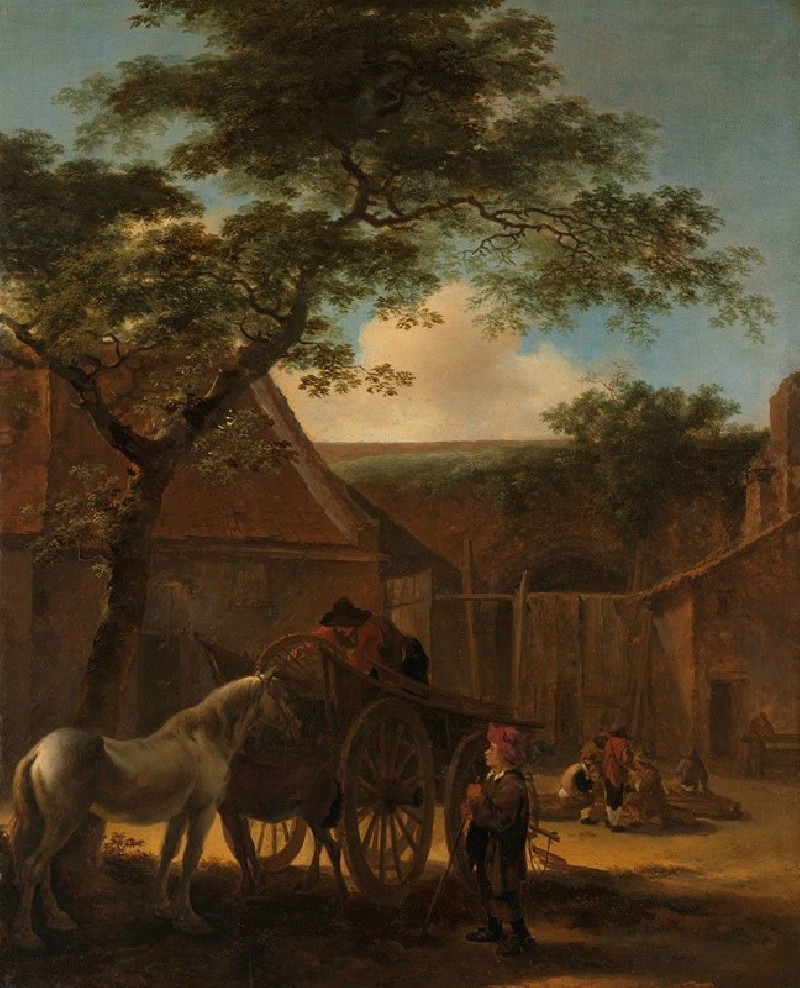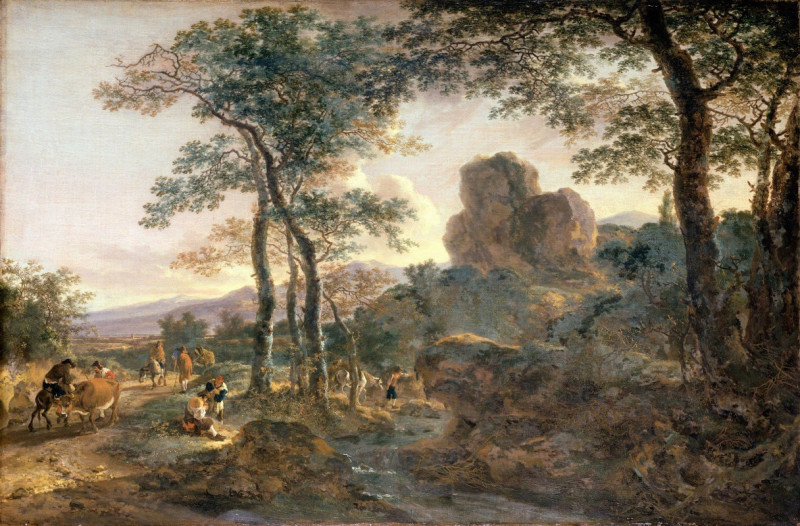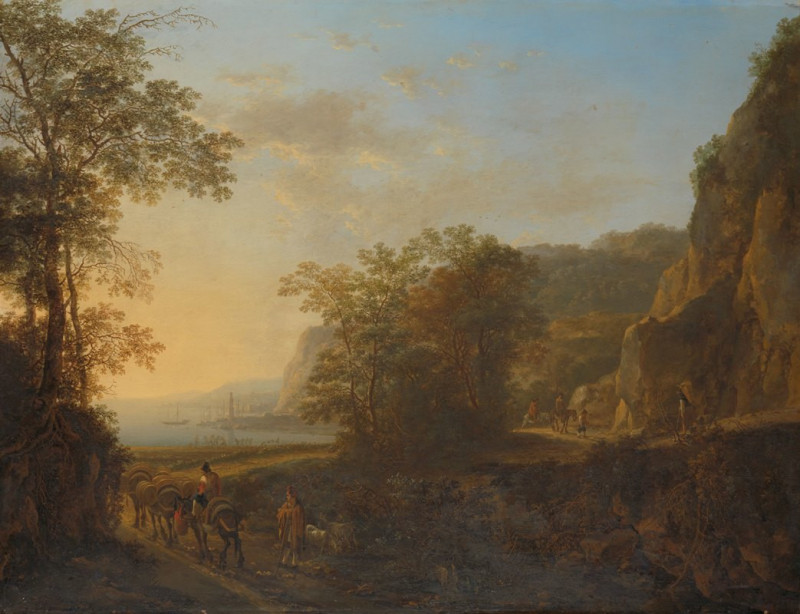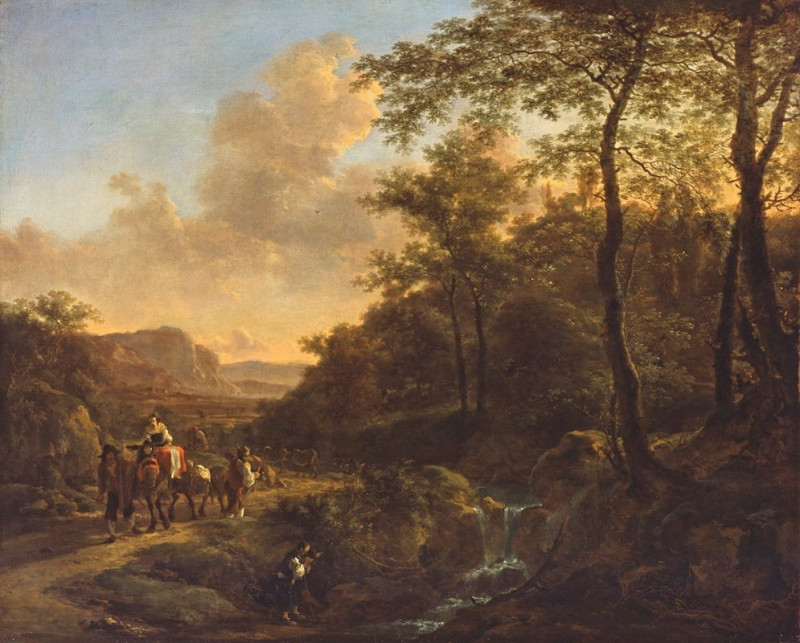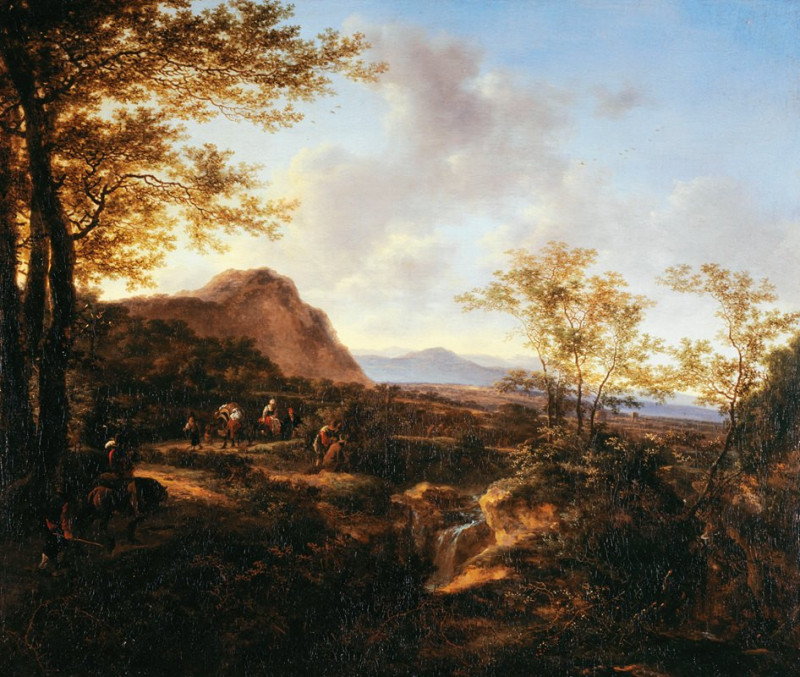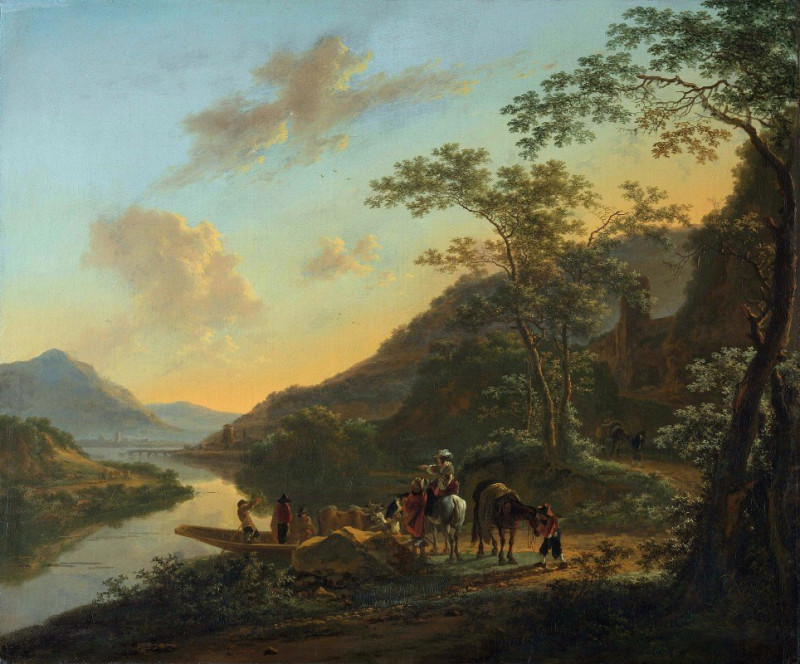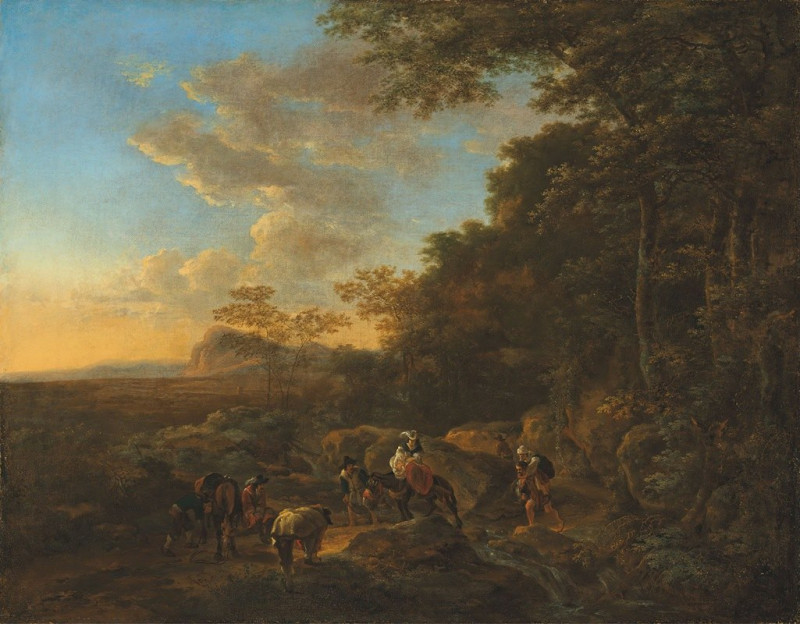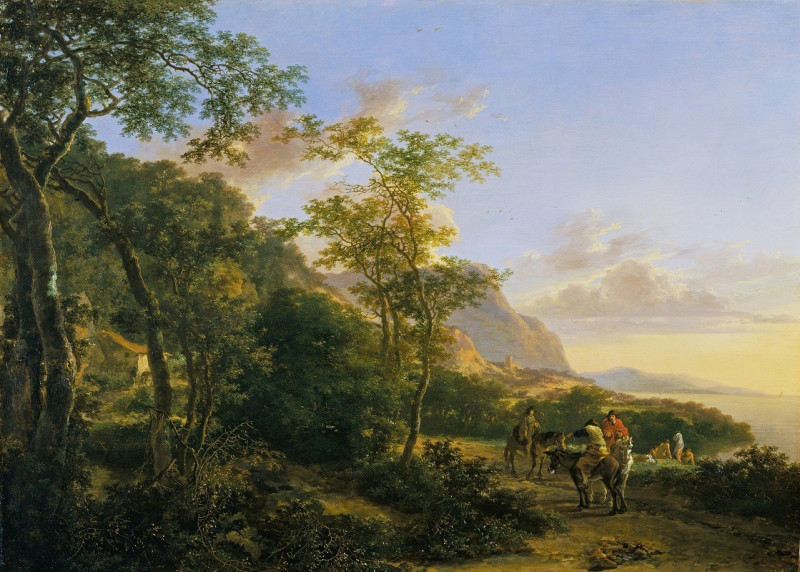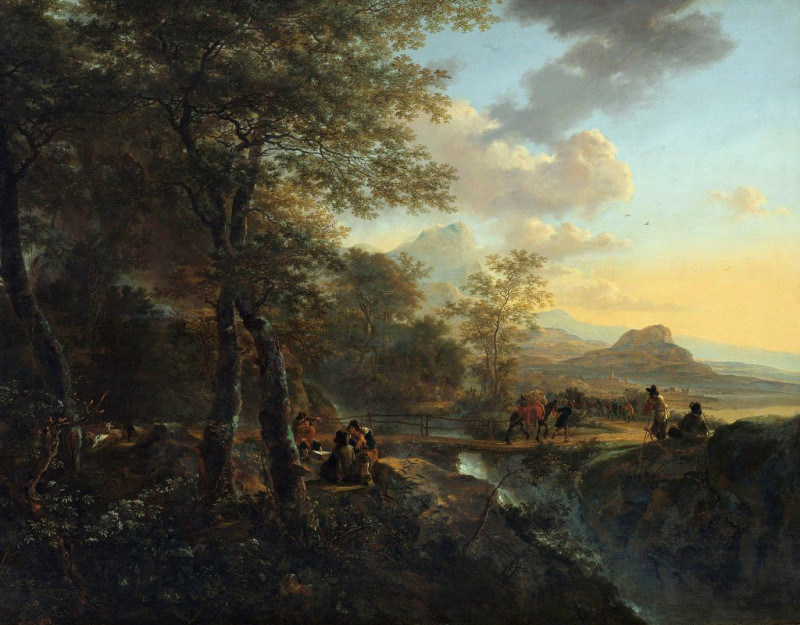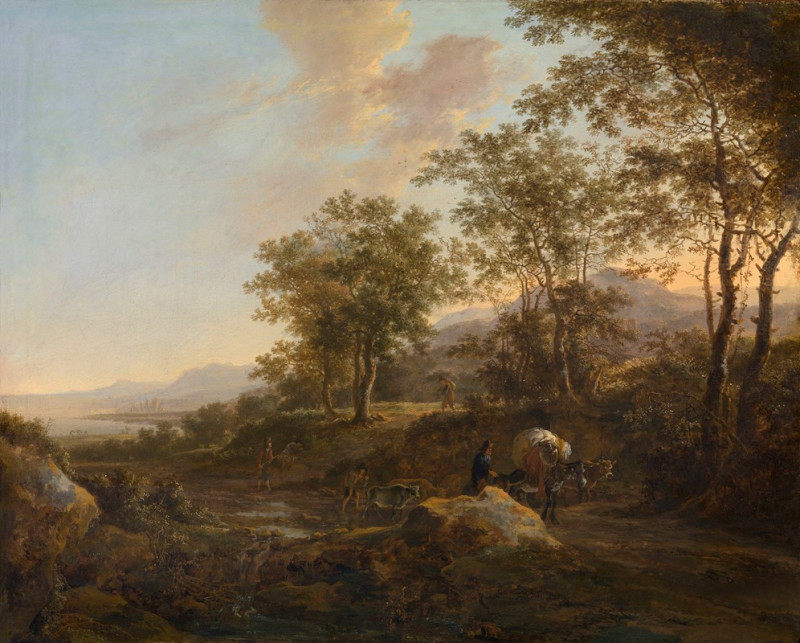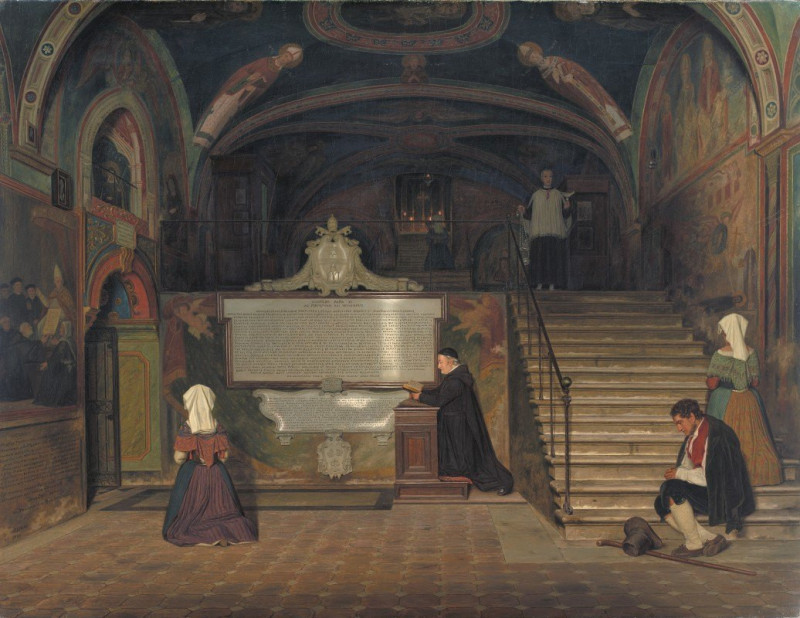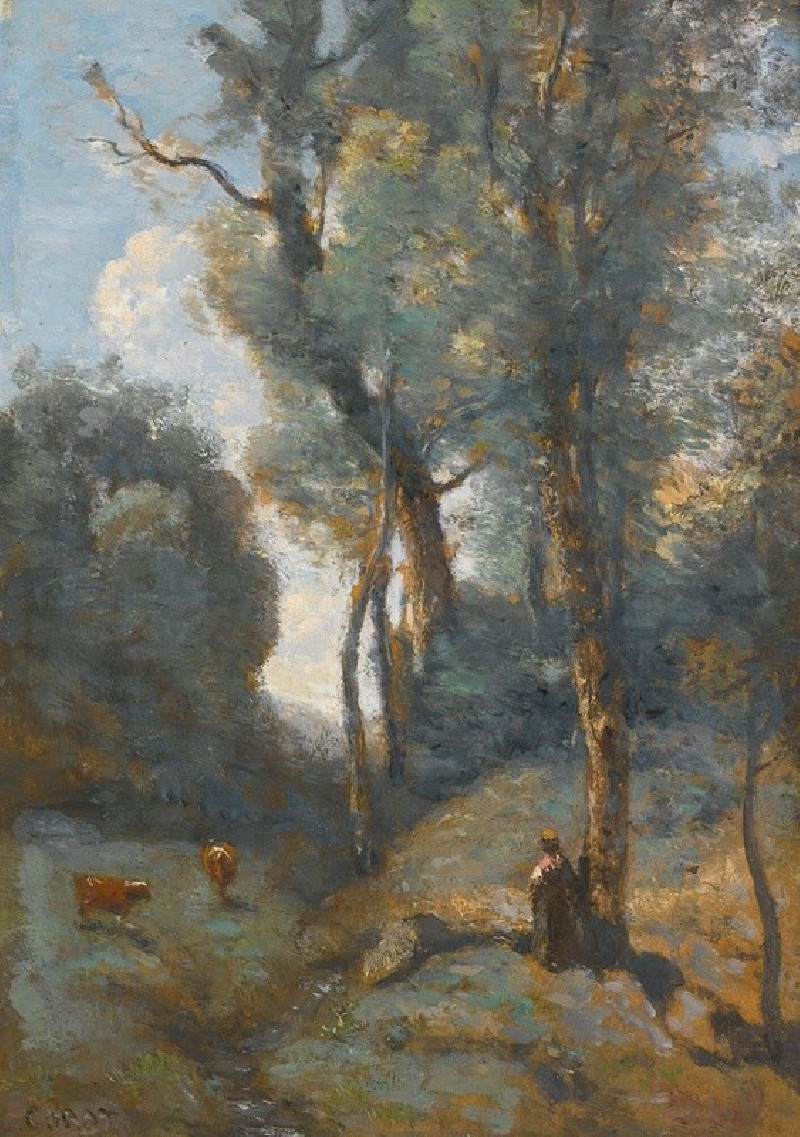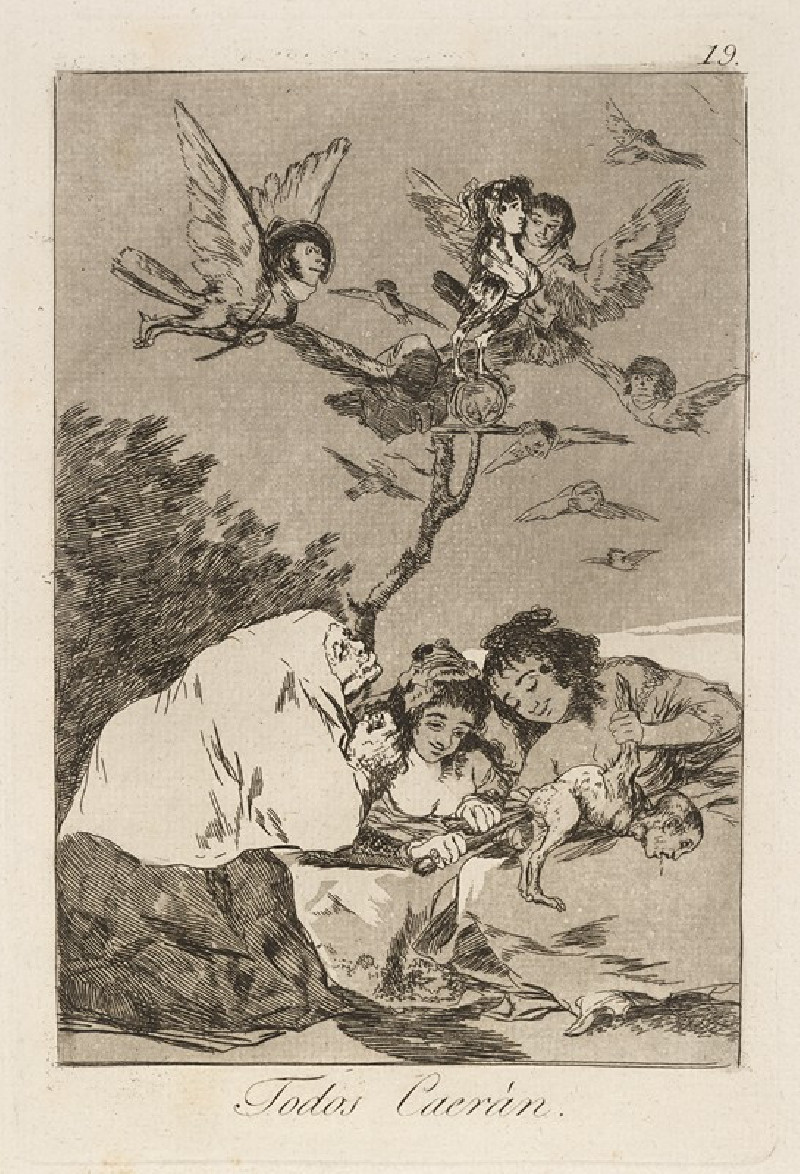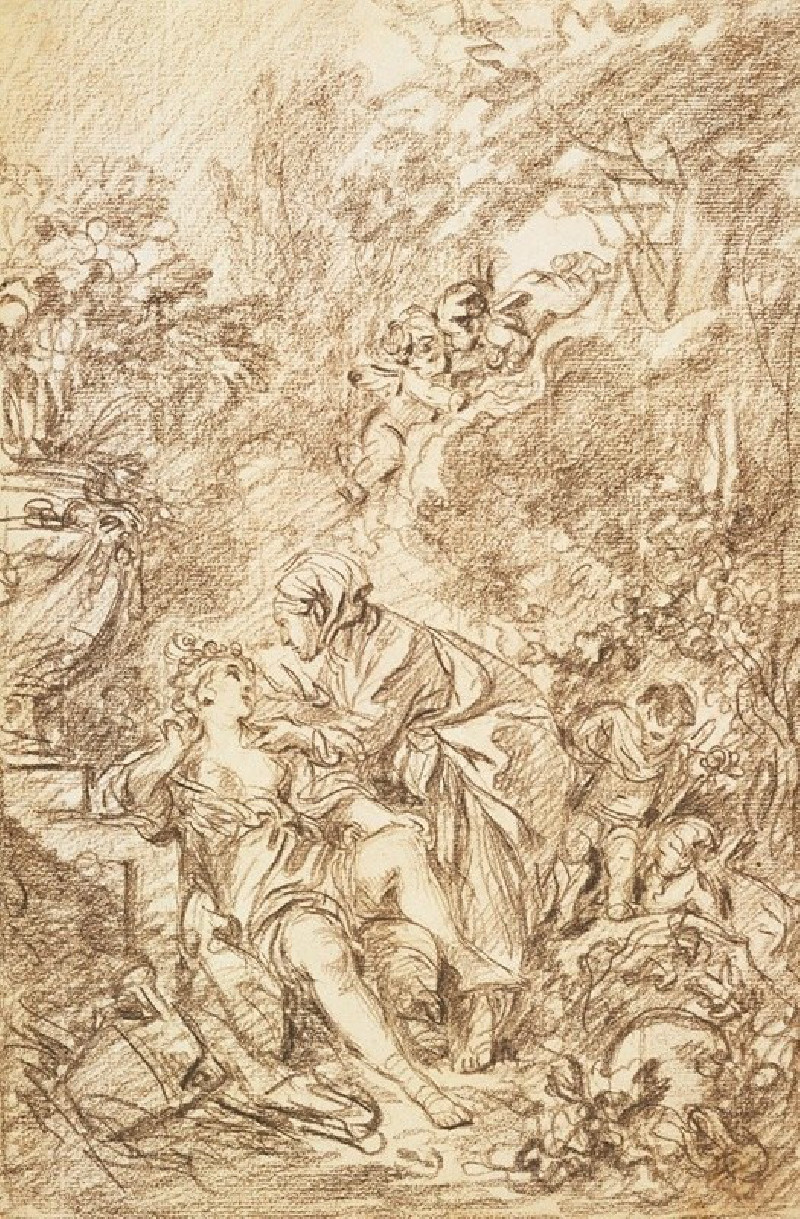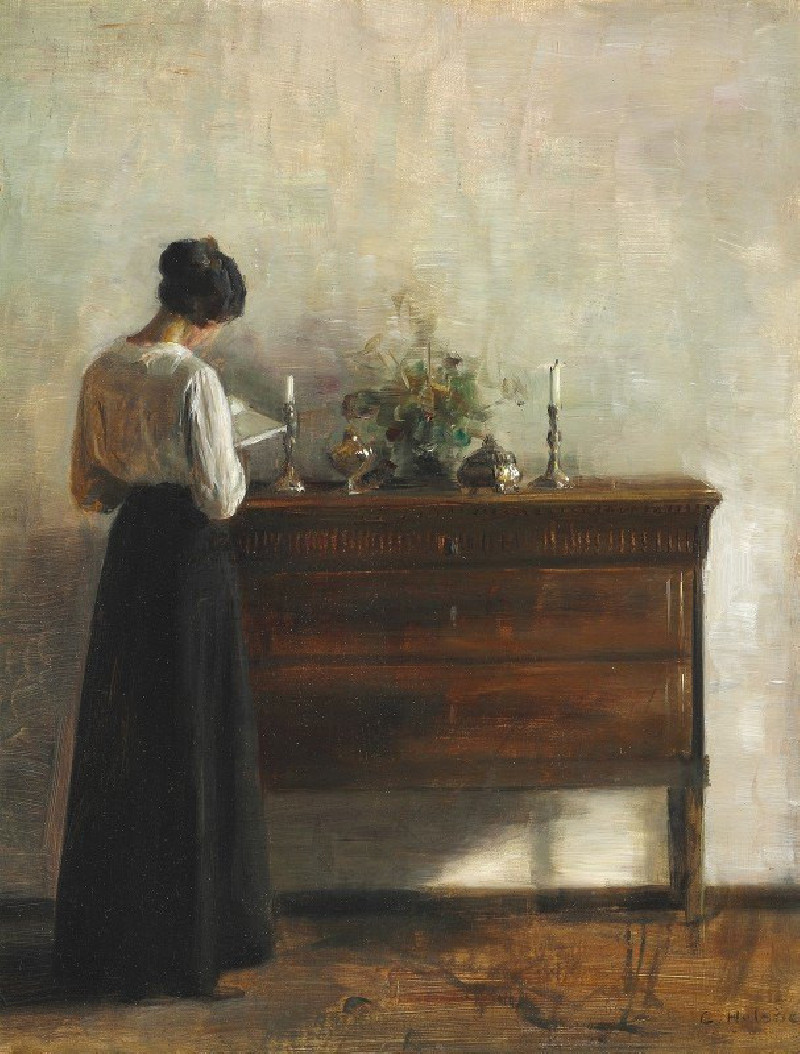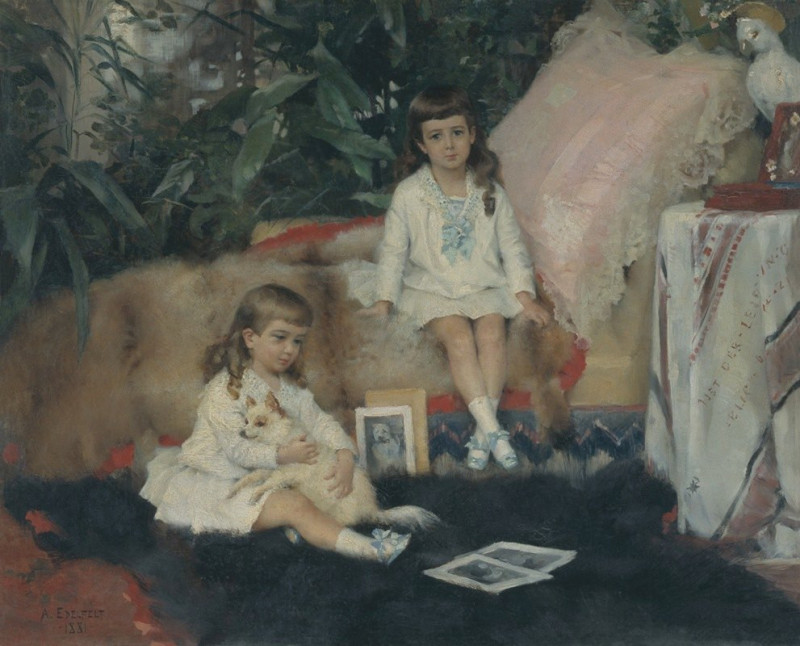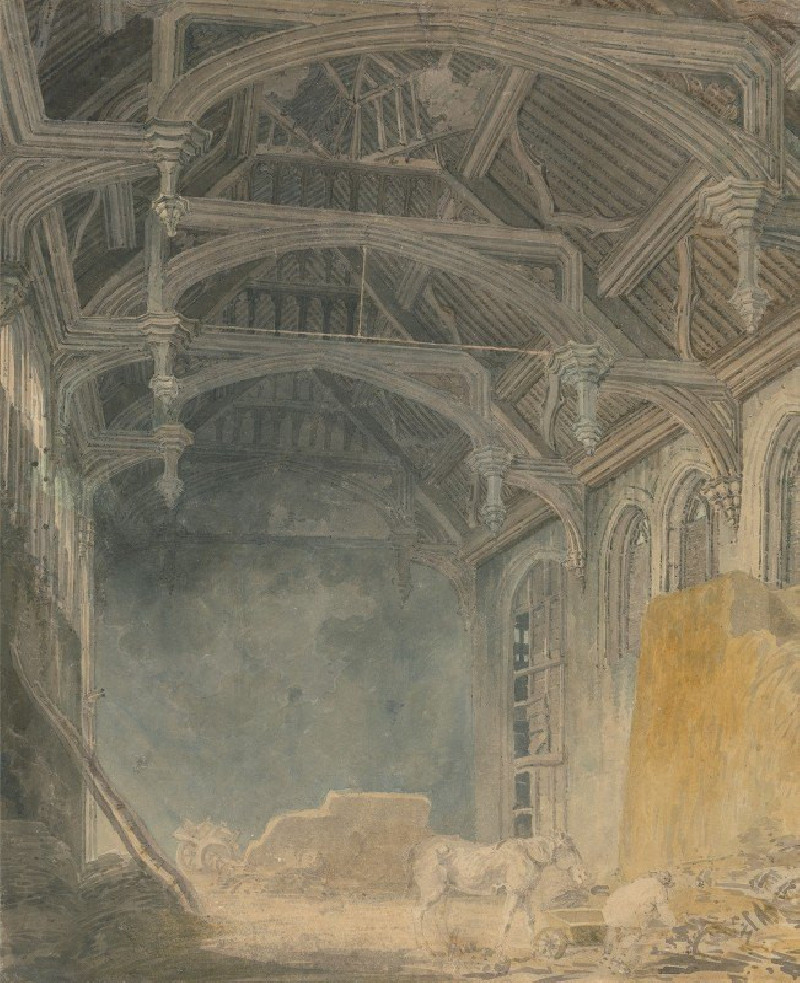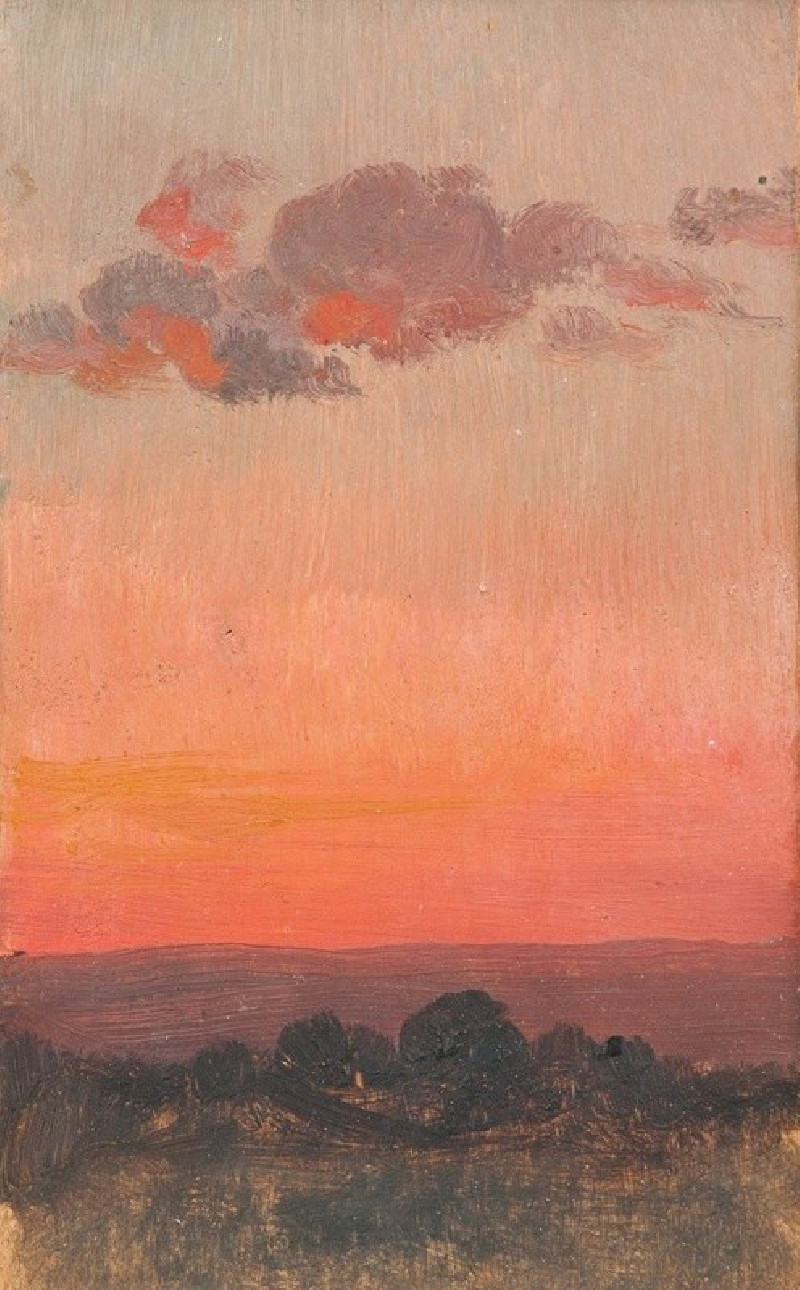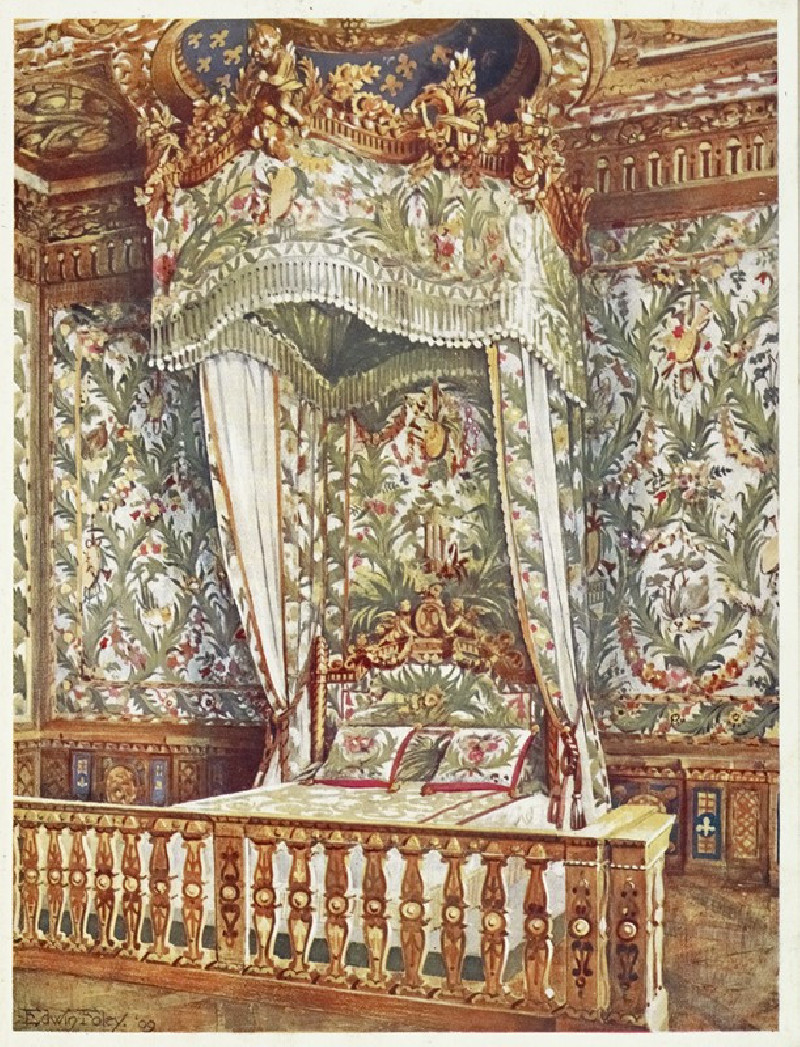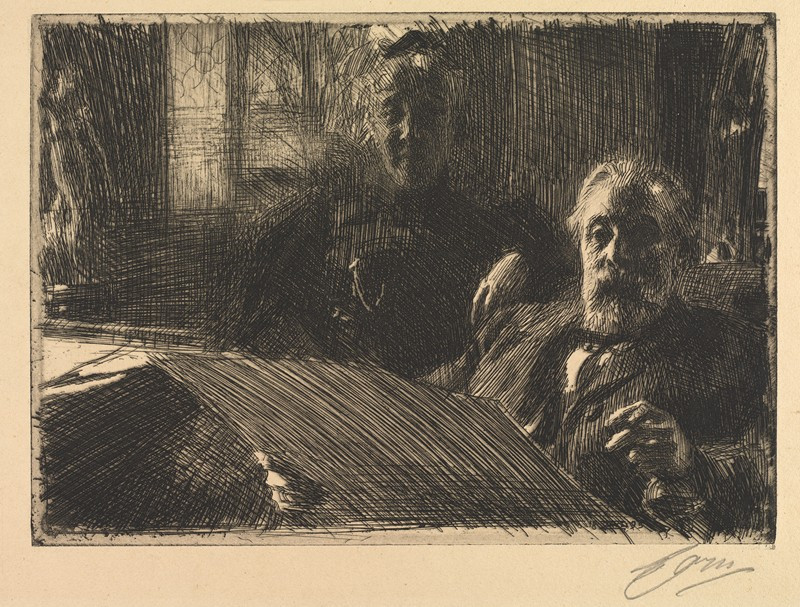Italian Landscape (probably c.1645 - 1652)
Technique: Giclée quality print
Recommended by our customers
More about this artwork
Experience the rustic beauty of Italy through the eyes of Jan Both, a master of landscape painting from the Dutch Golden Age. "Italian Landscape," believed to be painted between 1645 and 1652, showcases Both's extraordinary ability to blend naturalism with a poetic atmosphere.This enchanting scene invites you into a serene Italian countryside, where the delicate interplay of light and shadow dances across a verdant landscape. Under a vast, expansive sky, wispy clouds drift above rolling hills and a distant mountain, suggesting the grandeur and expanse of the natural world. The foreground of the painting is dominated by lush, detailed foliage and towering trees that guide the viewer's eye deep into the landscape.Central to the composition are figures that imbue the scene with life and narrative. A group of travelers, accompanied by their animals, pause on a rugged path, perhaps to converse or to rest after a long journey. Their presence adds a human element to the otherwise untouched landscape, creating a story within the stillness.Both's use of light is particularly noteworthy; the warm hues of the sunlight contrast with the cool shadows, adding depth and dimension to the scene. The detailed rendering of leaves, rocks, and distant water reflects Both's meticulous attention to texture and form, making this painting not just a view, but an experience of being amidst nature."Italian Landscape" by Jan Both is more than just a visual delight; it is a journey into the heart of Italy’s pastoral landscapes and a reflection on the timeless beauty that has inspired generations of artists and nature lovers alike.
Delivery
Returns
Jan Dirksz Both was a Dutch painter, draughtsman, and etcher, who made an important contribution to the development of Dutch Italianate landscape painting.
Both was born in Utrecht, and was the brother of Andries Both. According to Houbraken, the brothers first learned to paint from their father, who was a glass-painter or glazier there.

